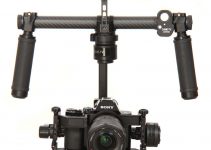Long takes, or “oners,” have gotten a fair amount of recognition over the past few years. Some movies even take the concept to the natural end and make an entire film that is shot to look like a single take. Even video games like God of War are getting into the mix!
Anyway, you may be trying to pull off a long take yourself and find it may be difficult without cutting. It is possible to pull it off with some smart shooting and editing. Hidden cuts are what made some famous “one shot” films possible and you can learn how to do it yourself with this video from filmmaker Steve Ramsden.
Invisible cuts are the name of the game here and there are quite a few ways to pull them off. Let’s take a look.
One thing to note is that this will require a combination of shooting technique on set with some editing in post.
Trick 1: Obscure Frame
The obscure frame trick is one you have absolutely seen even if you didn’t recognize it at the time. You will move the camera so that it is completely obscured, usually by a dark or even black object, and then hit cut. Then you can start the next cut from the same place and create a seamless effect.
By ducking the camera into a solid object or even to black it is a very easy trick to pull off and have look good.
A lot of modern films use this technique, commonly when the actors move into a darker area and they can get away with going all the way to black and then bringing it back up for the following shot.
Trick 2: Whip Pan
Imagine cutting on action but making that action very fast. That’s how a whip pan hidden cut can work.
To pull it off you just need to end the first shot and begin the second shot with the same whip pan movement.
Since the frame becomes blurred and there isn’t so much detail for viewers to lock onto you can usually pull this off seamlessly.
You’ll hopefully be able to do this with a straight cut and have the action matched up enough to pull it off.
Trick 3: Foreground Object
Sometimes called a frameblock transition, this hidden cut requires a bit of planning and practiced movement along with nifty editing.
If you have an object that passes in front of the camera that covers the entire height of the frame (or width depending on which direction the camera is moving) you can then begin the second shot with the same movement and join the two takes in editing.
You’ll want to move the second shot’s joining composite over the first shot to move with the object. This joint may take a while to get right and matched up.
The camera and action need to start and end in a very similar place for this to look right. Plus, crisp edges or a lot of distracting action or camera movement will make this much easier to pull off.
In your NLE you should be able to use a fairly simple mask to complete the look.
Trick 4: Build a New “Fake” Shot
The last trick is going to be the most difficult to pull off and requires a lot of visual effects on both the shooting days and in post.
What it takes is basically creating a shot that serves to bridge two very different shots.
Using visual effects work you create a seamless effect.
In the examples, there is usually a practical shot for the end of the first take and beginning of the second shot, but they have to be joined with some CGI or clever compositing.
By building the shot in post, you can create a very dramatic transition that looks seamless.
Some extra bits and pieces will help hide any joints.
What do you think about these tricks for pulling off a long take? Have you tried any?
[source: Steve Ramsden]
Disclaimer: As an Amazon Associate partner and participant in B&H and Adorama Affiliate programmes, we earn a small comission from each purchase made through the affiliate links listed above at no additional cost to you.


